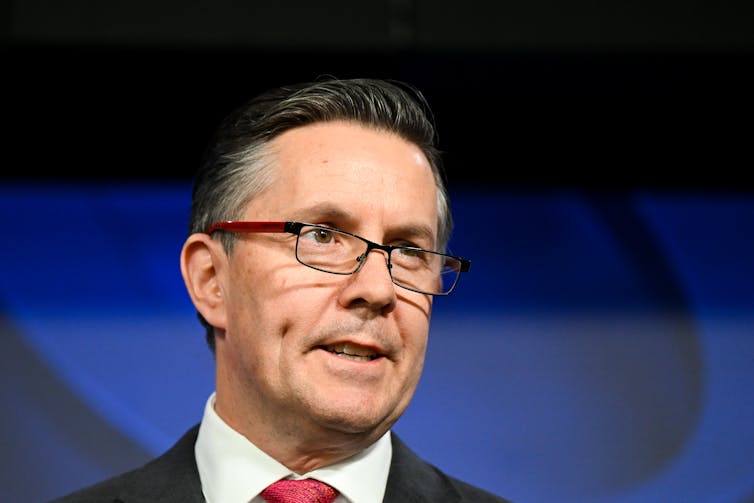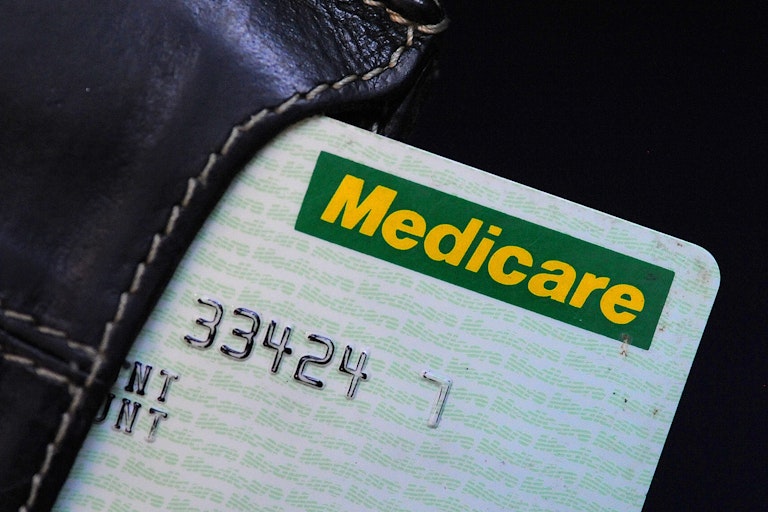There were four major changes for health care in the 2023-24 budget: prioritising primary care, funding to strengthen Medicare, cheaper access to common medicines, and new funding to keep the digital health system going. Many of these changes were foreshadowed in recent weeks.
The big news on budget night was a tripling of the bulk-billing incentive, a key plank to strengthen Medicare.
This payment was introduced in 2004 to encourage GPs to bulk bill pensioners, health care card holders and children. It provides an additional amount, of around A$7 to over $10 depending on GP location, on top of the ordinary Medicare rebate when the service is bulk billed.
But bulk billing has since declined, from about 90% of attendances in early 2022 to about 80% a year later. Bulk billing is unevenly distributed and in some low-income areas (bulk-billing deserts) fewer than 50% of people have all their GP attendances bulk billed. This causes uncertainty and people missing out on care.
A tripling of the bulk-billing incentive – described as the biggest investment in Medicare in 40 years – is hoped to stem, and possibly reverse, the decline.
However it’s unclear whether it will increase bulk billing. Practice owners could simply pocket the increased incentive for patients who are already bulk billed, leaving bulk billing rates unchanged. Or GPs could use the increased revenue from their existing bulk-billed patients to reduce their hours of work, rather than bulk billing more patients.
1. Primary care is now a priority
The most important change in the budget for health was symbolic: the government talked about primary care. Typically, health budgets are focused on hospitals, with primary care an afterthought, or worse: the target of budget cuts.
The 2023 budget starts the process of the primary care rebuild, modernising the system in response to the transition to a population with more people with multiple chronic conditions, such as diabetes, heart disease and depression.
In the lead up to the budget, Health Minister Butler emphasised the centrality of primary care to the health system. In addition to the rhetoric, this budget allocates real money to create a new foundation for primary care.

2. Funding the plan to strength Medicare
The second change is to fund what has been long discussed. Health Minister Butler signalled the focus on primary care as one of his first acts when he appointed the Strengthening Medicare Taskforce, which I was a member of.
The taskforce report, released late last year, sets out an ambitious blueprint for change. This budget includes the first down payment, of more than $1 billion new money in a full year.
Read more: New Medicare reforms won't fix everything but they start to tackle the system's biggest problems
A key challenge for primary care policy is the reliance on fee-for-service payments. The budget addresses this by modernising the way the government pays for primary care in two critical ways:
Patient enrolment
First, it introduces the concept of enrolment into the Australian primary care world.
Long part of primary care systems internationally, and regarded as one of the key “building blocks” for good primary care, enrolment involves a patient identifying a preferred GP as their main source of care.
Patient enrolment, dubbed MyMedicare, will mean the practice or GP has responsibility for the patient between visits, and therefore introduces a long-term relationship between patient and practitioner.
Team-based health care
The Strengthening Medicare Taskforce also recommended more multi-disciplinary or team-based primary care, involving nurses, physiotherapists and a range of other health providers and administrative supports. This is a somewhat back-to-the-future initiative as the 21st-century iteration of the Whitlam government’s community health program.
The budget provides a significant increase in the workforce incentive program, which provides grants to practices to employ nurses, Aboriginal and Torres Strait Islander health workers and allied health professionals.
The program recognises that care for people with multiple chronic conditions requires the skills of a range of professions. Importantly, many general practices have already recognised this and are already providing team-based care.
The increased funding in this budget will reward that past behaviour, making these practices more viable, as well as encouraging an expansion in other practices.

3. Extended prescription dispensing length
The third budget change, announced in April, reduces prescription costs for medications by extending prescription quantities to two rather than one month’s supply for many common medications.
Despite the tears and histrionics of the Pharmacy Guild – the lobby group of pharmacy owners – the expert Pharmaceutical Benefits Advisory Committee recommended this modest change five years ago.
It doubles the amount of medication that may be dispensed under a single prescription, reducing patient co-payments and dispensing fees paid to pharmacists. It reduces government outlays by about $400 million a year and shows the government is prepared to take on a powerful stakeholder, despite the guild’s threats, big political donations and local campaigns.
4. Digital health time bomb
Finally, the budget addresses a time bomb left by the previous government: digital health.
The Strengthening Medicare Taskforce identified contemporary digital health capacity as essential for a modern health system. Yet peculiarly, the previous government did not provide funding for the Digital Health Agency and My Health Record on an ongoing basis. It was due to expire on June 30 2023.
Some $250 million has been allocated in a full year simply to keep the lights on and My Health Record ticking over.
Although the current functionality and support for My Health Record leaves much to be desired, closing it down without replacement was never an option.
What’s missing?
The obvious omission relates to mental health. Although funding has been provided for more budget time bombs – programs which otherwise would have ended – and funding for additional places in psychology courses, mental health reform is still a work in progress.
The discontinuation of the COVID-related temporary extension of the Better Access program from a limit of ten to a limit of 20 mental health visits prompted predictable criticism, even though the program was demonstrably inequitable. The government has recognised this gap, titling its mental health budget announcement “laying the groundwork”.
Overall, the health component of the 2023-2024 budget is well crafted. It signals a new priority for primary care and provides a new foundation for funding reform for the future.


